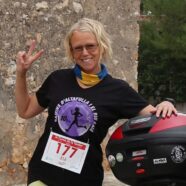Åsa Öhqvist
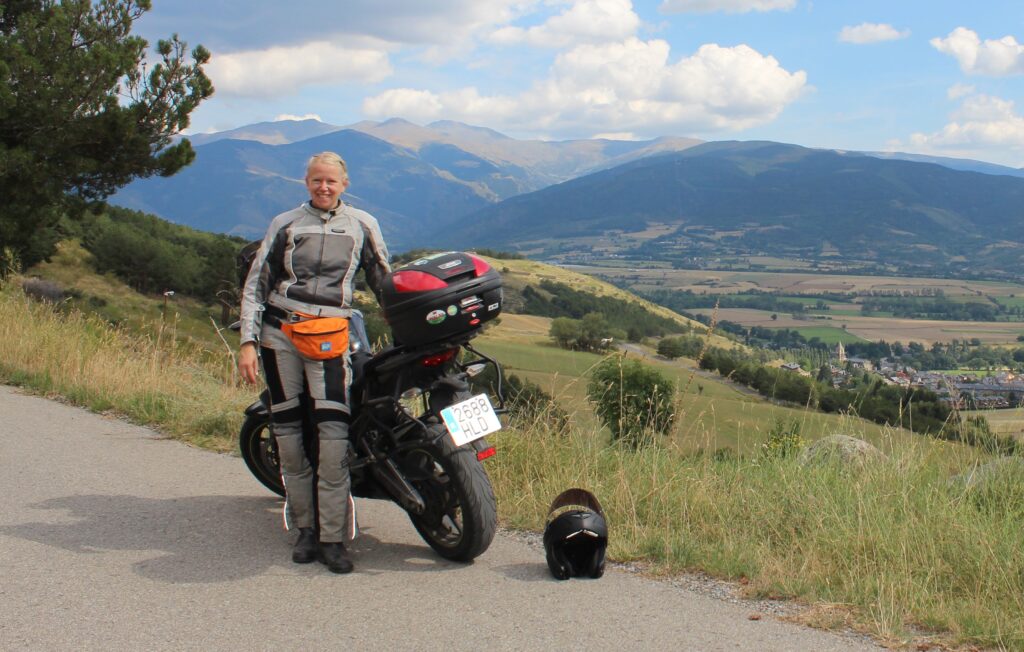
Name: Åsa Erika Öhqvist
Country: Born in Sweden, currently residing in Spain
Languages: Swedish, English, Spanish, Catalan
Height: 177cm
Inseam: 88 cm
Current motorcycles: I have two BMW F650 GS, a red 2007 at my home in Spain and a blue 2002 at my dad’s house in Sweden. The blue one is my favorite.
Past motorcycles: 1998 Ducati 600 Dark; Ducati 620, Ducati 695, Kawasaki Versys 650
Website: https://forza.greynorth.net
Please introduce yourself. I started my career as a preschool teacher. Later, I studied English Literature and Linguistics and got a certificate in teaching English as a second language. This eventually led me to my current job as a Swedish as a second language teacher. I’m currently working on a Master’s degree in linguistics.
I’m also a board member of WIMA Sweden and working on the WIMA History book. I love running and yoga. I consider my two marathon finishes some of the best achievements of my life. I also enjoy listening to music, especially on vinyl, and cooking vegetarian food.
Describe your path into motorcycling. I came into motor biking simply by falling in love with a motorcyclist during a winter when his hobby was dormant. When summer arrived, I realized that I had to get involved with motorcycling if I was ever to see him during riding season, which is typically May to September in Sweden. I didn’t like riding pillion, so I got my motorcycle license during our second summer together.
In Sweden, you get a special permit and then you can practice with an experienced rider. This meant that he became my tutor and he patiently rode with me all summer. I’m a slow learner so it was probably about 4000 km or so. This was in 1999. My love for motorcycling outlasted our relationship and we parted as good friends a couple of years later.
Compared to some other countries, Sweden is quite progressive with women’s roles and equality between men and women, but even so it was fairly novel to be a woman biker back then, especially if you were riding and travelling on your own.
I can’t say I faced any particular challenges apart from men telling me things I already knew or people in general being shocked that I was out and about riding my bike on my own. On the flip side, I have always found helpful people when I was in need of help due to a mechanical issue or a roadside breakdown.
Winters are long in Sweden and I struggled with the darkness and this led me to looking for jobs in the south of Europe. In 2007, I landed a job at the Scandinavian School of Madrid and I left Sweden permanently to explore if my hypothesis was true: that if I were able to ride my bike every day I would be happier. No one believes me when I say this was my reason for moving, but it is the truth! Except for a break of two years when I lived in London, UK, I have lived in Spain ever since and yes, I am happier.
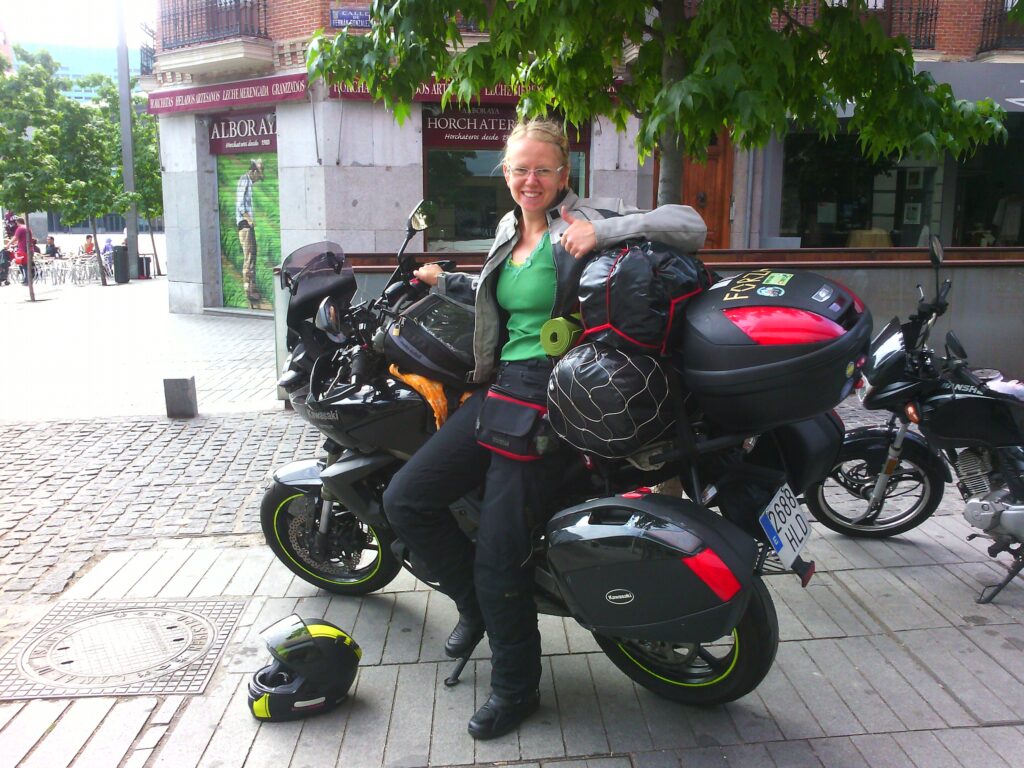
Have you been a part of any motorcycling clubs? When I lived in Sweden, I was part of the Swedish Ducati family, Svenska Ducatiklubben, which involved a lot of pizza, pasta and Italian wine, as well as motorcycling – both on the road and on the track. I briefly joined the Spanish equivalent when I moved to Madrid. These kinds of brand-oriented clubs are great, they are so passionate and supportive in all kinds of ways but it makes it very difficult to change brands as you then fall out of the social circle very quickly.
How did your association with WIMA begin? When I was younger, I always wanted to ride a lot. No one wanted to ride as much as I did, so naturally, I was often out riding and travelling on my own. In a general sense I would describe myself as activity-centered rather than people-centered. This was also how I came to join WIMA. I was stoked to find an association where I could travel to countries all over the world and meet other women riders. After joining in 2004, I heard about the upcoming international rally in New Zealand in 2005. I ate oat porridge – the cheapest food you can eat in Sweden – for dinner for one year to save up for the rally and two months of riding in New Zealand and Australia. After this, life was never the same. I can’t stand oat porridge any more, but I’ve travelled to 16 international rallies in 13 different countries and I have made friends from all over the world.
Do you have a motorcycling achievement that you take pride in? My greatest achievement is academic. Working together with Sheonagh Ravensdale as sub-editor for the WIMA History book, collecting material spanning over nearly 75 years, and documenting the development of WIMA into an international association, the national divisions, all the international rallies and compiling this into a photo book available for the public is a massive project and our legacy. By doing this, we have made sure that the pioneering women within our organization will not be forgotten. This is important because they were blazing the trails for all of us coming after and now we all benefit from greater equality in the motorcycle world.
I’m proud of my years serving in WIMA, both internationally as Vice President and President and as a board member of WIMA Sweden. Internationally, I see my greatest achievements to be bringing WIMA into Spanish-speaking America, as well as Africa and the Arabic countries, which contributed to making WIMA even more international by reaching new continents.
In Sweden, by contrast, my challenge is to revive the organization and prevent it from dying out. In a country where equality is taken for granted and the number of women clubs and Facebook-groups are numerous, it is important to continue to inform about WIMA and the support that we, through our hobby and the organization, can give to women riders everywhere.
As for travelling, I’ve done a lot of riding over the years which some would call achievements depending on whom you ask. Perhaps the most noteworthy was the 8000 km ride on my Ducati Monster, called the Grand Tour on my blog, when I rode from Spain to Sweden and over to England for the international WIMA rally and then back to Spain again. I’ve also lived for nine months out of my panniers after leaving London and while figuring out where to settle down, or rather which country to settle in. This was after Brexit messed up the life plan my British partner and I had.
I’m also proud of being a norm-breaker by initiating my life partner into riding and taking him pillion. Believe me – this makes jaws drop, especially in Spain but in Sweden too. He now has his own license and motorbike but sometimes still prefers to go pillion.
Tell us a good story from your riding adventures. This happened back when I lived in Sweden and rode a Ducati. Back then, I was mesmerised by the glamour of the Nurburgring. It seemed like everyone spent their holiday riding 600 km of autobahn from Kiel down to Adenau in Western Germany to ride – or shall I say race – on the Nordschleife, the northern part of the Nurburgring. “The Ring” is not a race track per se but a one way road with free speed and road tolls, open for public riding and driving with all sorts of vehicles.
It had been raining for days before, when I finally got to ride on the track in the two hours’ public access window. I knew that there could still be wet patches on the road, so I was cautious but I also fully enjoyed the riding. I was overtaken by lots of vehicles but the only one I overtook was a Japanese couple sightseeing in their rented car – that was how comparably slow I was. And yet, I felt the need to do a last-minute braking before a tight right-hand turn and down I went. The consequence was that I was lying with my bike in a hidden corner with all sorts of vehicles whizzing past me.
Needless to say, no one stopped to help. I used a rush of adrenaline to get my bike up and get it started. The bike ran fine but the handle bars and gear shift were bent. Since I couldn’t shift gears, I finished my lap in first gear – most possibly the slowest lap time ever – and fearful of being run over despite staying on the right hand side of the track.
Back in the pit lane, I took my boot off to examine my foot, which was swelling up. Luckily, as a European citizen you can get emergency care in any country in the European Union so off I went to Adenau Hospital. They were accustomed to motorcycle accidents and were very efficient. Every part of me where my gear had scuff marks were x-rayed to make sure I didn’t have another injury. I was all good, apart from my big toe… a small body part that is more important than one might think.
My friend picked me up on his race bike, which didn’t have a pillion seat or foot pegs and somehow, we got back to our accommodation. The following day we replaced the bent handlebars on my bike and straightened the gearshift lever. The day after, it was time to return home. I rode the 600 km up to the ferry in Kiel shifting gears with my heel as I couldn’t put pressure on my front foot. My left turn indicator was broken, so I had to use my left arm to signal while passing vehicles on the autobahn. This was in the beginning of the short Swedish riding season so that entire summer I had to continue riding this way until autumn, when my foot finally healed and I could get an appointment for repairs in a motorcycle garage. To not ride was of course not an option for me.
Is there any other kind of motorcycling that you’d like to try your hand at? I’d like to try off-road and trails on a light bike. With my F650GS it is a bit too challenging and I feel limited by its weight.
Do you do maintenance and repairs on your bike? I try sometimes but I find it difficult to learn. I can change oil and filter with confidence but not much else. I imagine that I would find it easier if I had a garage but that could well just be an excuse.
If you could change one thing about the world of motorcycling, what would it be? I would love for all forums to be inclusive and helpful and non-patronising.
What’s your dream bike? Actually, I have my dream bike, it is the blue 2002 F650GS. I love it and I will ride it until the end of its days. The reason for this is largely emotional and related to the loss of my brother to ALS in 2004. Back then, I was still riding my first Ducati Monster but looking to upgrade to a newer bike. I was looking at different brands and models and naturally discussing this with my brother. When you spend a lot of time with someone who is suffering from this type of paralyzing illness, it is natural that you spend a lot of time talking about all kinds of mundane things. It is not that my brother had a particular interest in motorcycles, he was a computer tech person. But anyhow, when we looked at different types of bikes and their features, he said he really wanted me to go for the BMW. I test rode it but didn’t like the engine and I ended up getting another Ducati and after that another Ducati again and then a Kawasaki.
At the international rally in Australia 2015, I rented an old blue F650GS purely because it was the cheapest option. After the rally, I rode the Great Ocean Road on it and during those 4 days of travelling I fell in love – how could I have not liked this thump-y engine and cool looking bike before? Anyway, change can take time and it was not until my mum suddenly got very ill and was diagnosed with cancer in 2018 that I actually bought one. My summer plan was as usual to cross Europe riding Spain to Sweden for my summer visit but, instead I rather impulsively bought a Swedish, blue F650GS off the internet and flew to Sweden to have more time with her. I rode this bike all summer, back and forth to the hospital and I just loved how the bike made me feel more relaxed. Yes, wind therapy did work for me. I also felt like I was honoring my brother’s opinion by finally getting the bike he thought I should have.
RIDING IN YOUR COUNTRY
If I were to visit you and we went riding for one short morning ride, where would you take me? If you were visiting me in Sweden I would take you on a small gravel road, which has been nominated the most beautiful gravel road in the region Värmland. It goes through pine forest and is both twisty and undulating which provides a kind of rollercoaster feeling. We would then go to Värmskogs Café and indulge in their räkmacka, a Swedish-style open-face prawn sandwich. We would sit on one of the benches out in the sun overlooking the lake. This café has been a riding destination for bikers for decades. I’ve been riding there since I was a learner twenty five years ago.
In Spain, it would be a twisty tarmac ride. There is a loop that goes around the Foix, a local water reservoir and the tiny village Castellet, named so after the castle which the houses are centered around. We would stop in the village for a typical Catalan breakfast, a coffee and pa amb tomaquet, a toast that you drizzle with olive oil and rub fresh tomato on. This spot is popular for bikers on weekend mornings, as it has a shaded outdoor terrace that overlooks the water – and since this is in Spain, shade is important.
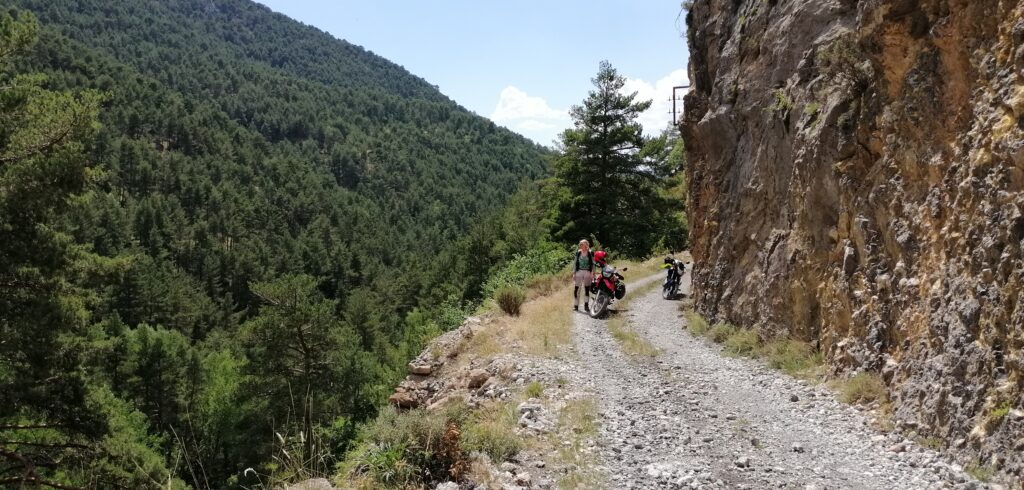
What’s the best part about riding in your country? For Sweden, I would say the country roads, both asphalt and gravel. There are so many roads between fields and forests that are very quiet and you can take in the scenery without being disturbed by other road users. I especially like riding through pine forests because of the sunlight that filters through the trees and the mossy ground with blueberry and lingonberry shrubbery.
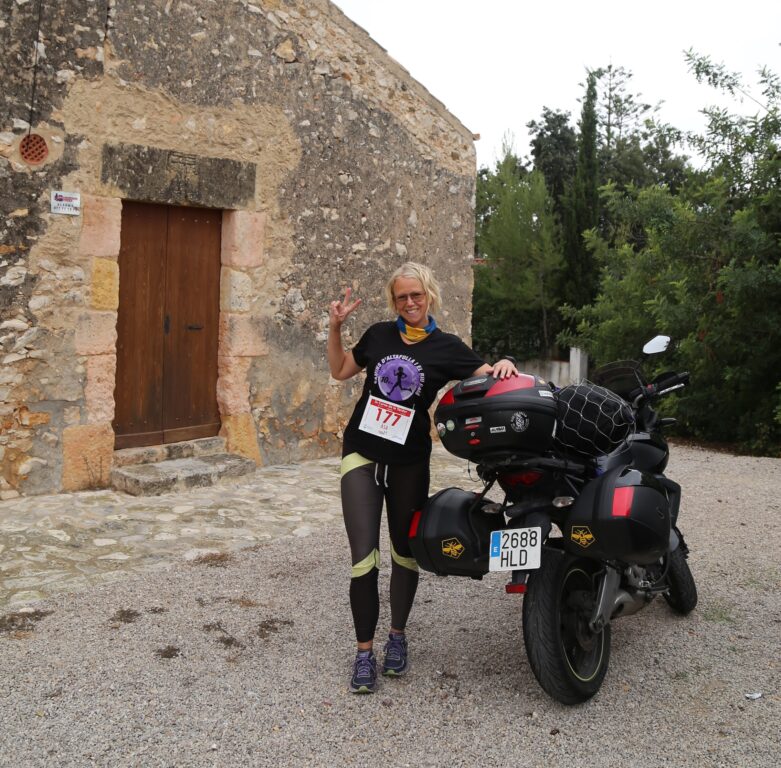
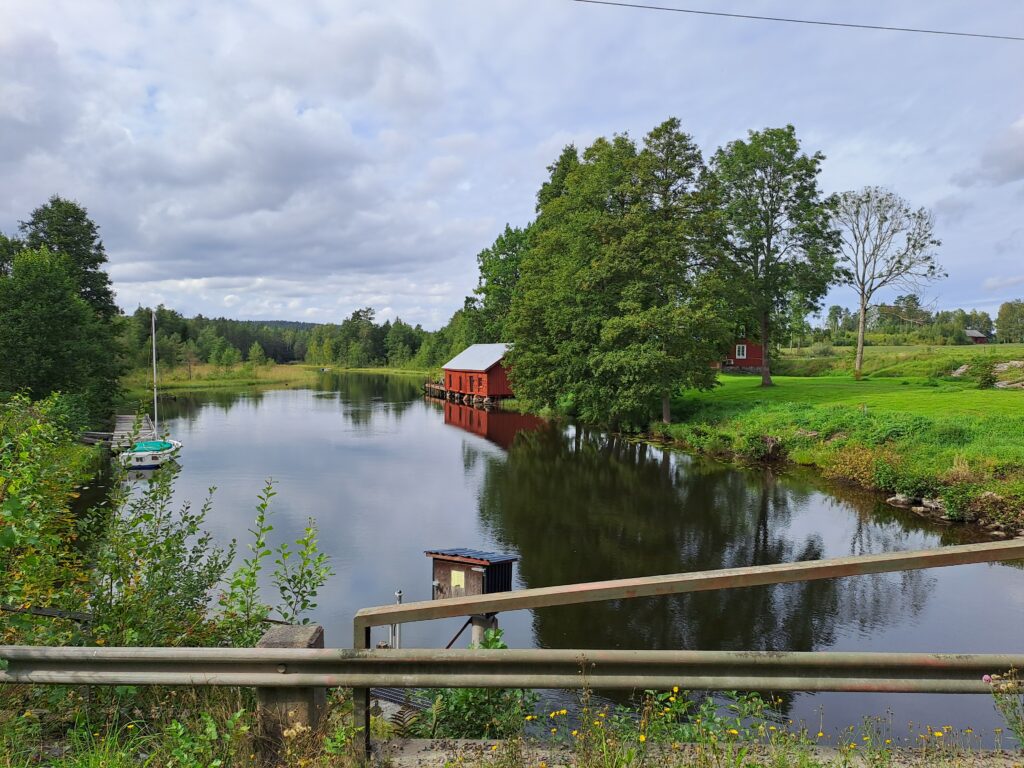
For Spain, definitely the mountains! There are so many mountain areas that are beautiful for riding. I live near the Pyrenees, which are well-known and indeed spectacular to ride, but there are many smaller mountain areas that are fabulous too. I like the nature area of Monsant and the Prades mountains. It is also a wine growing area so it makes for a fantastic weekend away as I can try different local wines with dinner after riding all day on twisty roads with fantastic views. Apart from mountains, I love riding between the vineyards, for me as a north European, it is very exotic and I never get tired of seeing the vineyards.
In the same way, I see the sometimes endless pine forests in Sweden with new appreciation after moving to Spain.

What are the top rides you recommend in your country? For Sweden, there are some routes that are held in high regard such as “Bulten” and “Tisselskogen” but my top recommendation is to choose the smaller roads and stay off the E roads and you’ll always have a pleasant experience.
In Spain, you have, for example, the Picos de Europa and the Pyrenees but I would like to emphasise that all mountain areas provide fantastic riding, basically all areas that are called Montanyas de… or Parc Natural de… will provide great riding.
If you choose the less famous areas, you’re more likely to get a quiet ride… I usually look for the roads less travelled rather than the top rides, which attract a lot of vehicles.
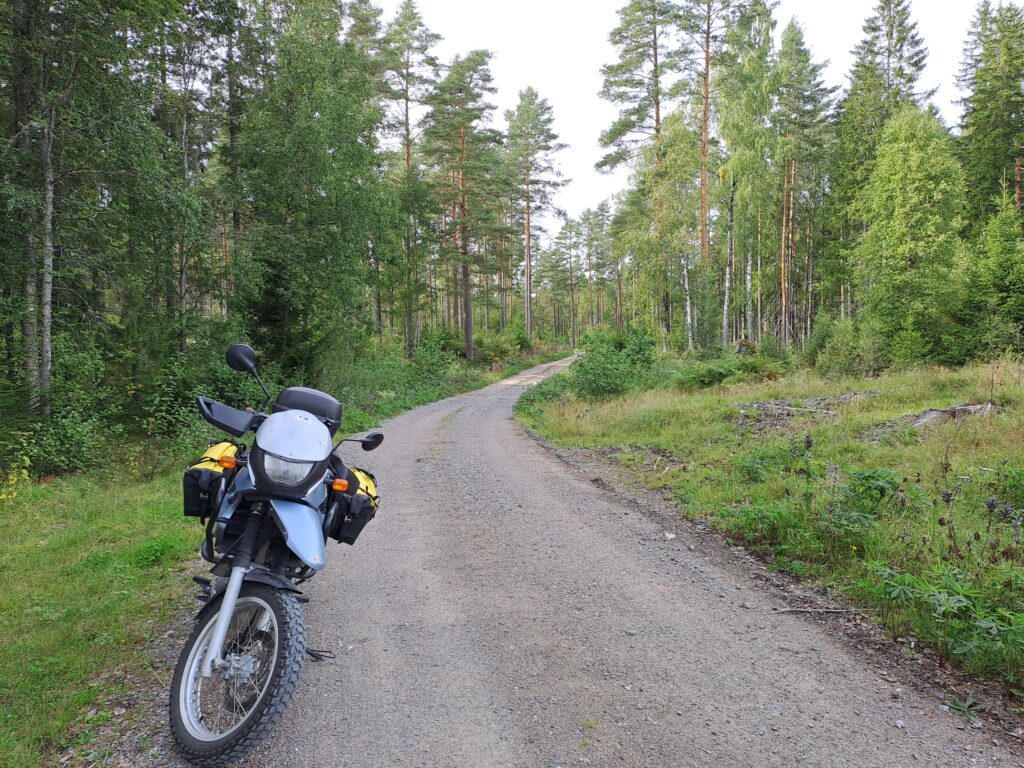
What kind of food can riders expect to stop for on the way that is typical to your region? In Sweden it is Räkmacka, an open-face prawn sandwich with egg, mayonnaise and some cucumber and salad on, if you want something hearty. But if you prefer something sweet, ice-cream is always popular and different types of berry or fruit pies with vanilla sauce are also top of the list. Blueberry, apple and rhubarb are very common.
In Spain, it would be raciones, shared plates of on single type of food. I usually choose two to share with my partner: calamares, which are fried squid rings and patatas bravas, fried potato pieces with hot sauce. If you want something on the go, you can always get a bocadillo, a piece of baguette typically with one filling, such as calamares, ham, cheese or potato omelette.
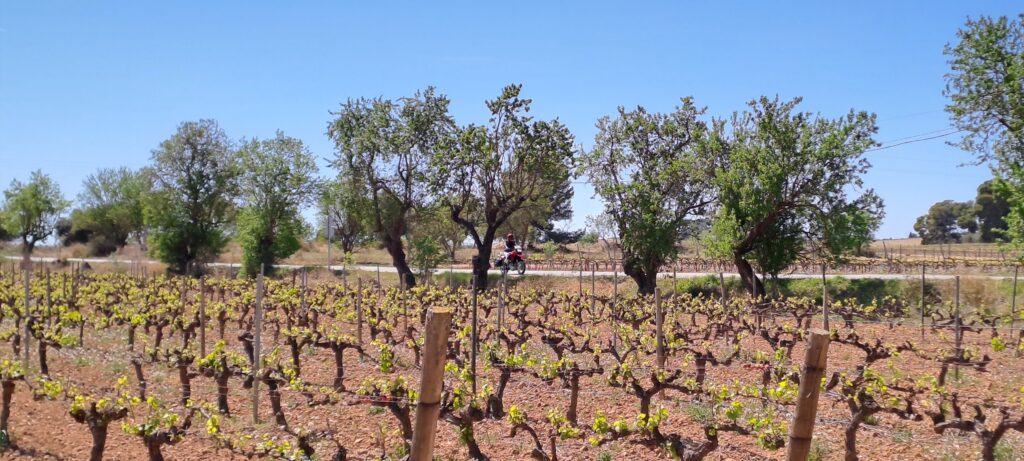
YOUR FAVORITE MOTORCYCLING
Books: Derek Mansfield’s Notes from the Road because of his storytelling in poetic writing style and the fact that he uses semicolons (linguistic nerd here) and Laia Sanz’s biography Quien tiene la voluntad tiene la fuerza (translates as “who has the will has the strength”) for the personal story of being a woman in the circus around the Dakar rally and her way to success.
Movies: Daniel Rintz’s Somewhere Else Tomorrow. I followed him back in the day when he was on the road filming for this, now acclaimed, movie and it struck me how he was creating a documentary every bit an as amazing but without the backup that Charlie and Ewan had for Long Way Around.
Professional Motorcyclist: Laia Sanz for off road and Ana Carrasco for track. I’ve been following their careers for years and I find their dedication and achievements inspiring.

